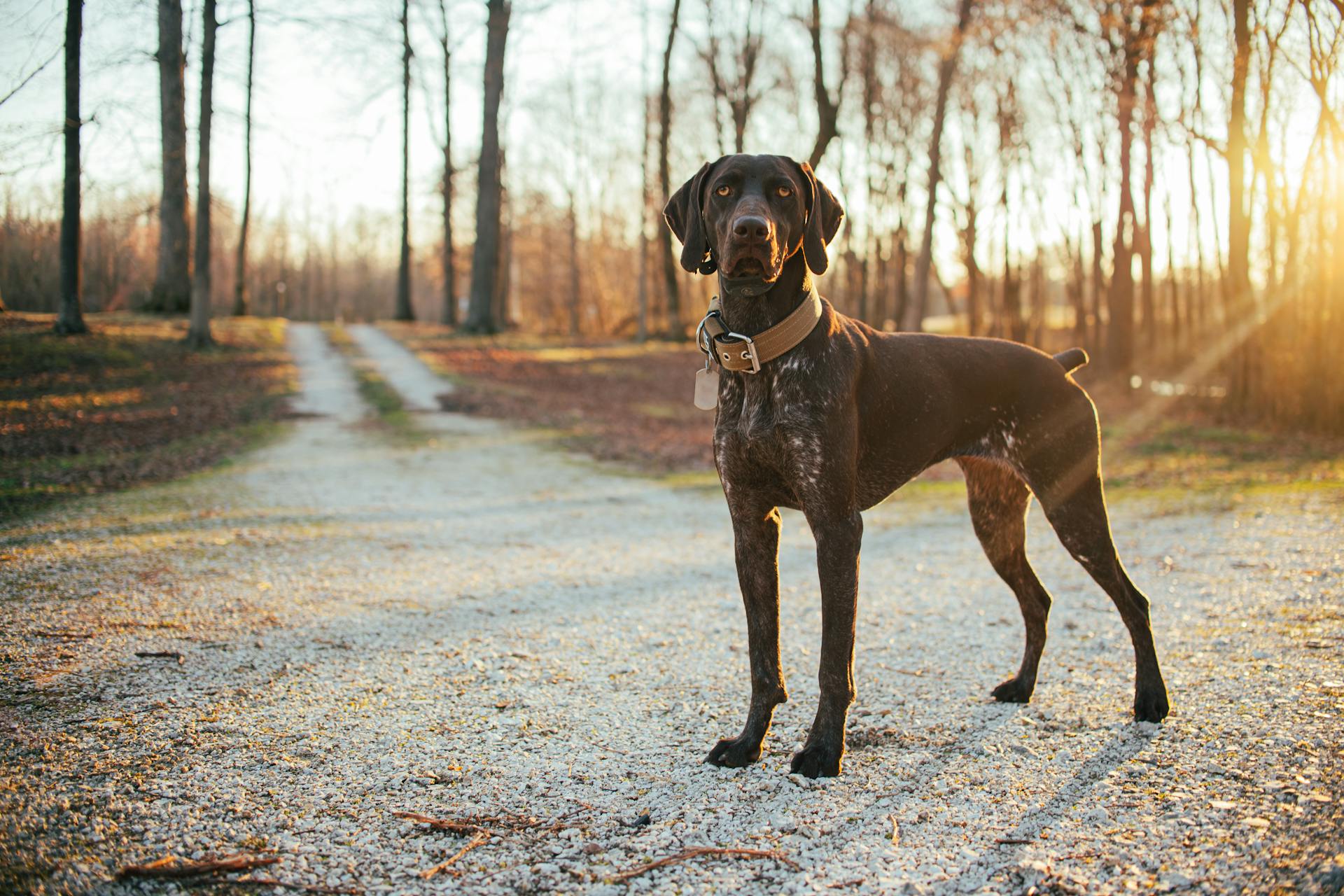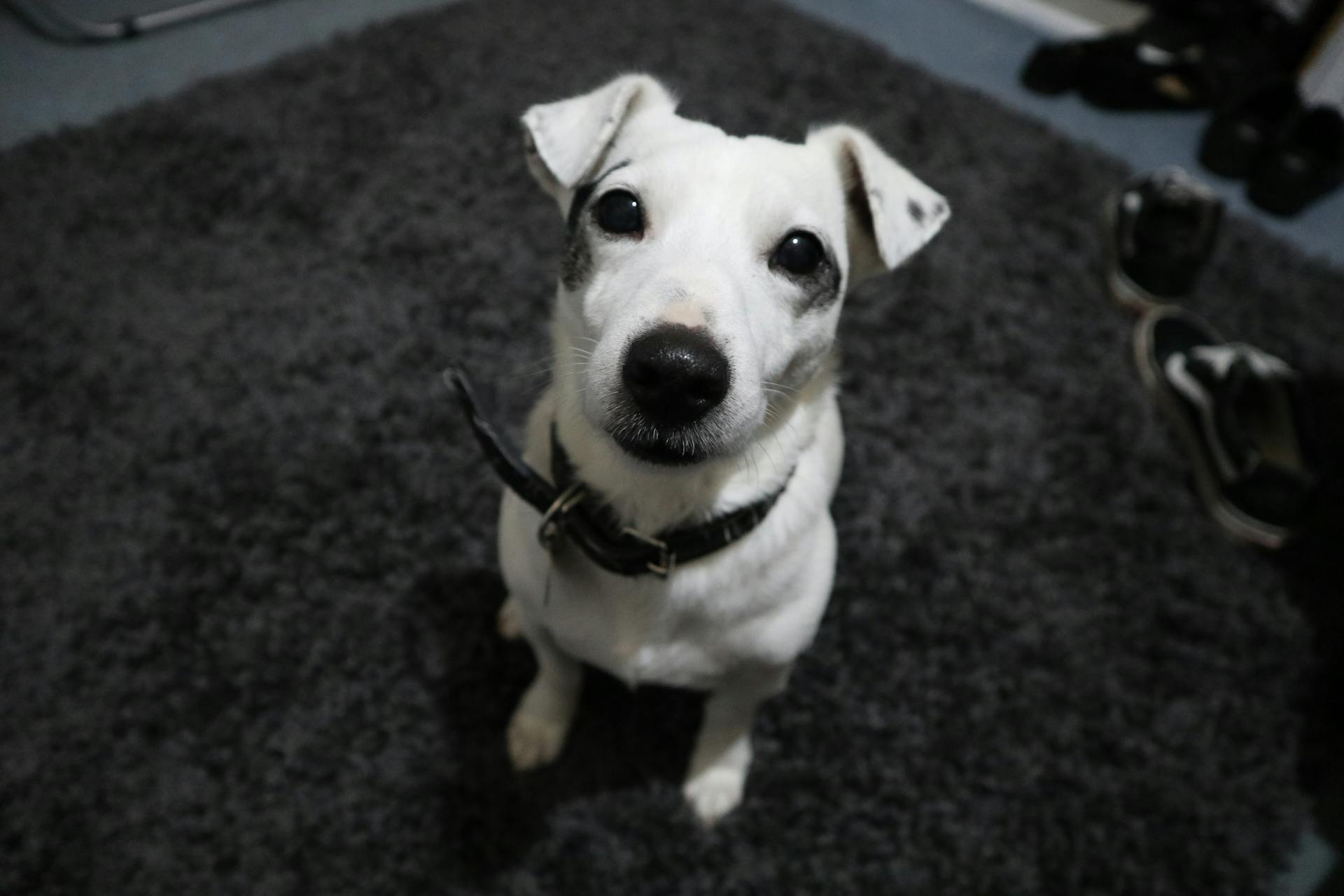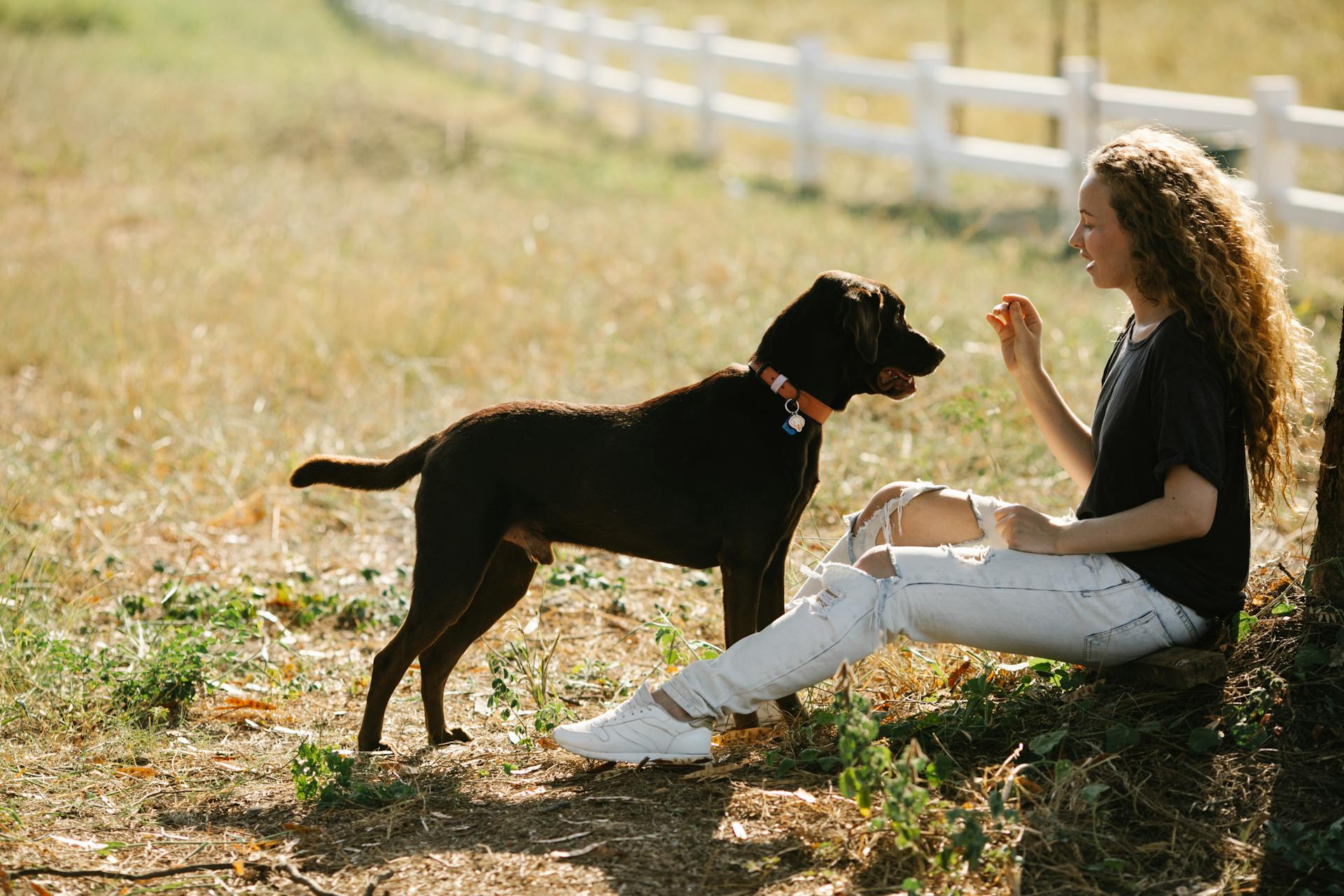
If you're considering using a prong collar for training, it's essential to have a backup plan in place to ensure safe and successful training. A well-structured training plan is crucial for avoiding accidents and injuries.
Prong collars can be effective for training dogs, especially those with strong prey drives or high energy levels. According to research, prong collars can help reduce undesirable behaviors like pulling and lunging.
However, prong collars can be harsh on some dogs, especially those with sensitive temperaments. In fact, studies have shown that prong collars can cause physical and emotional stress in dogs.
To mitigate this risk, it's essential to have a backup plan in place, such as a harness or a head halter, to provide a more gentle and comfortable training alternative.
Why Use a Backup Collar When Training
Using a backup collar is crucial when training with a prong collar because it can accidentally come apart during training. This can lead to a dog being off-leash in an area with distractions.
Prong collars are designed to provide a strong correction, but if they come apart, the dog can be at risk of running off. A reliable recall is essential in such situations.
I know a friend who had a dog get loose when the prong collar came apart, and it was a tragic outcome. The dog ran out into traffic and was killed instantly.
A backup collar can prevent such tragedies from occurring. It's a simple yet effective safety measure that every dog handler should consider.
To use a dominant dog collar as a backup, it's essential to size it correctly. We recommend oversizing it by 3-4 inches to ensure that the correction comes from the prong collar, not the slip collar.
For trainers who plan to wean off a prong collar, having two dominant dog collars on the dog is recommended. One should be used as a backup with a prong, and the other as a normal training collar.
Types of Backup Collars
A prong collar backup is a must-have for any serious dog trainer, and there are several types to choose from.
One type is a Dominant Dog Collar, specifically designed to be used as a backup to a prong collar. These collars should be sized correctly, with a recommendation to oversize by 3-4 inches to ensure the correction comes from the prong collar, not the slip collar.
A Dominant Dog Collar can also be used as a normal training collar, fitting snugly under the jaw and behind the ears with only 1 inch of slack.
For trainers who want to wean off a prong collar, having two Dominant Dog Collars on the dog is recommended, one as a backup and one as a normal training collar.
Another type of backup collar is the GSS - Biothane Prong Collar Backup Safety Connector. This simple clip-on device prevents the dog from getting loose if the prong collar comes undone, and can also be used with a harness.
Frequently Asked Questions
How to use a safety clip for a prong collar?
Attach the safety clip to your dog's flat collar and leash to prevent the prong collar from coming loose in case it accidentally detaches. This ensures a secure connection between your dog and leash at all times.
Sources
- https://leerburg.com/prong-collar-backup.php
- https://www.chaostocalmk9training.com/blog/2021/1/20/3-ways-to-backup-your-training-collar
- https://redlinek9.com/products/all-weather-prong-collar-leash
- https://germanshepherdshop.com/products/gss-biothane-prong-collar-backup-safety-connector
- https://www.dogsportgear.ca/products/all-weather-prong-collar-leash
Featured Images: pexels.com


